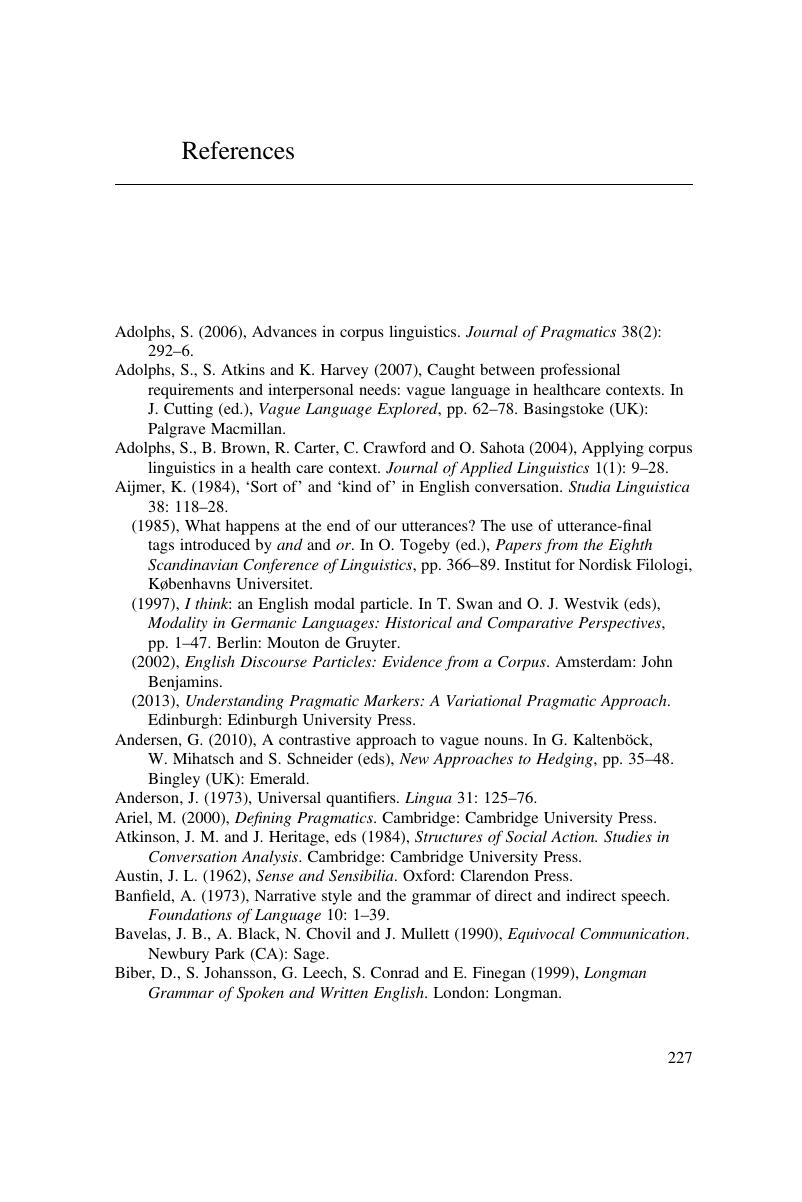Book contents
- Elastic Language
- Elastic Language
- Copyright page
- Dedication
- Contents
- Figures
- Tables
- Preface
- Book part
- Conventional notations
- 1 Introduction
- 2 Theoretical foundations
- 3 Elasticity theory
- 4 Methodology
- 5 Linguistic realisation of elastic language
- 6 Strategies of elastic language
- 7 Elastic language, power and gender
- 8 Elastic language and speech factors
- 9 General discussion
- 10 Conclusions and implications
- References
- Index
- References
References
Published online by Cambridge University Press: 05 August 2015
- Elastic Language
- Elastic Language
- Copyright page
- Dedication
- Contents
- Figures
- Tables
- Preface
- Book part
- Conventional notations
- 1 Introduction
- 2 Theoretical foundations
- 3 Elasticity theory
- 4 Methodology
- 5 Linguistic realisation of elastic language
- 6 Strategies of elastic language
- 7 Elastic language, power and gender
- 8 Elastic language and speech factors
- 9 General discussion
- 10 Conclusions and implications
- References
- Index
- References
Summary

- Type
- Chapter
- Information
- Elastic LanguageHow and Why we Stretch our Words, pp. 227 - 240Publisher: Cambridge University PressPrint publication year: 2015

